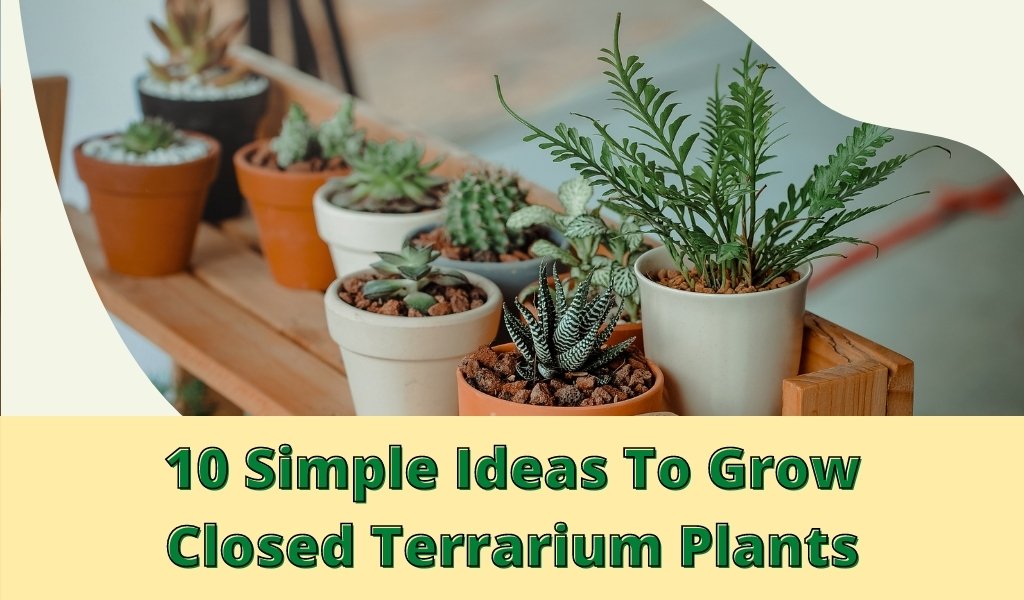A Terrarium is a miniature garden growing inside transparent glass or plastic containers. It is a work of art anda thriving environment for plants. It can make any room beautiful and interesting and is also easy to maintain than an aquarium. It consists of soil, plants, pebbles and often charcoal which keeps the air and water clean. A terrarium can look similar to a Vivarium, but while the later serves as a habitat for animals, a terrarium sustains only plants.
Terrariums were incredibly popular in the 1970s and then slowly faded into the background. In the last handful of years, though, they are again gaining popularity for many reasons, but this time as sleek, modernized versions of the iconic, large displays of the past.
It is thought this current rise in popularity goes hand in hand with an overall increased awareness of health and wellbeing. People realize the immense benefits of nature, plants, and green spaces on their physical and mental wellness. Indoor plants provide the same perks to facilitate this connection when life and work keep you from getting outside. Choosing to garden in a terrarium provides you with an incredibly low-maintenance way to garden indoors.
See our living room plants collection
Now let us talk about 10 different ideas to grow closed terrarium plants.
1). Plastic or Glass DIY Terrarium
When choosing what type of container you want to use, plastic and Glass are the two best and most popular options. While plastic is more durable and lighter, a glass terrarium is cheaper and widely available. Plastic is prone to discoloration and scratches. Glass can be limited to certain shapes and sizes.
2). Get Creative with Containers
There are many available options if you want to buy a DIY terrarium, but they can be expensive. So, for a true DIY, try an old glass coffee pot, a clear glass vase, an empty pickle jar, a light bulb or even an old fish pot to learn how to build a terrarium.
3). Charcoal and sand for drainage
For the plants to prevent rotting, your DIY terrarium will need a layer of sand and crushed Charcoal. And in the mid-sized terrarium, a 1-inch layer of sand/charcoal mix is sufficient while learning how to build a terrarium.
4). Get some Pebbles
For your DIY terrarium, you will need some small stones. Small beach pebbles work well, as do small pieces of broken pottery. And if you want to put it in attractive colours, you can try aquarium gravel.
5). Plant selection
There are endless options when it comes to plants for your terrarium; plants should be such that they tolerate humidity (cactus and succulents work best in an open container that allows humidity to dissipate). Also, make sure you choose plants that will work in your space – whether you will have low and indirect sunlight or you will have lots of natural sunlight. Popular plants for terrarium include Baby’s Tears (also known as Angel’s Tears), Creeping Fig, Mosses and African violets.
6). Enough Space
To prevent overcrowding, you need to keep in mind that you will want to choose slow-growing plants. Also, make sure the plants are small enough to fit into your terrarium without touching the side, and there is enough space.
7). Layering
Now that you have all the materials required to build a terrarium, start with layering your DIY terrarium. If your terrarium is closed, add a layer of sand/crushed charcoal for drainage. Now add the rocks or aquarium gravel. Pour a layer of sand mixed with Charcoal across the rocks. Next, add the soil and leave holes large enough for the roots of each of your plants. Look at your terrarium when you are done with each of these layers; the material at this point should be one-third of the size of the container. The soil layer must be the thickest. Pack the soil to make sure you remove any air pocket. Now add your plants.
8). Decorating
You can then decorate the terrarium with some small figurines, shells or decorative rocks. Be creative; anything goes when you are learning.
9). Watering
With a spray bottle, you can lightly mist your DIY terrarium. Water your plants once a week if you have an open terrarium, and be careful to avoid any moss that does not need much water. The soil should not be wet or bone dry; it should remain barely moist. And if you have a closed terrarium, you may rarely need Watering. Also, be careful when it comes to direct sunlight, which can burn plants.
10). Pruning
And later, carefully prune the plants when they start getting overcrowded and remove dead foliage. This will help prevent rotting.
Terrariums are a great way to maintain an aesthetically pleasing indoor garden. These miniature ecosystems are low in cost and due to their glass enclosures and the natural recycling of moisture that occurs within, yet provide many benefits to the audience of their beautiful nature display.

